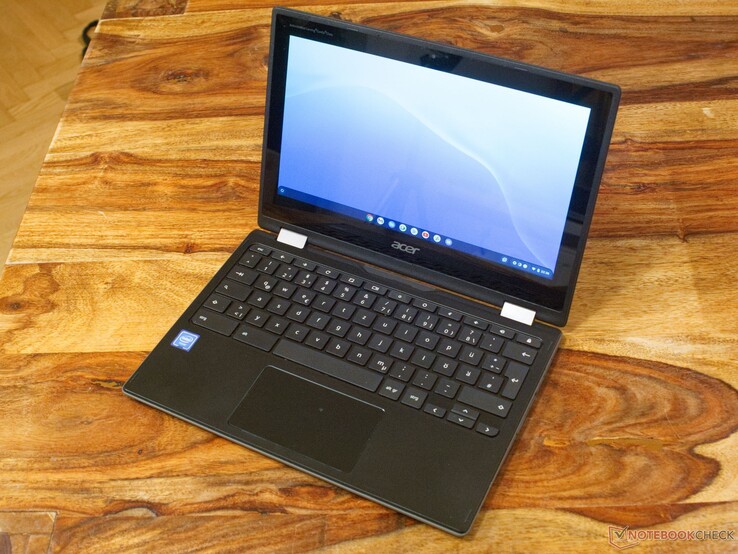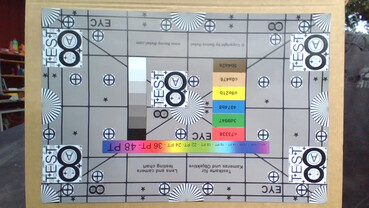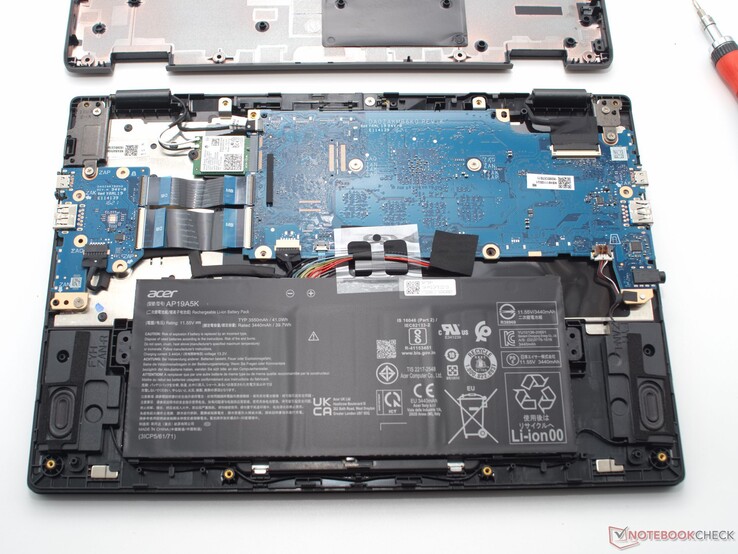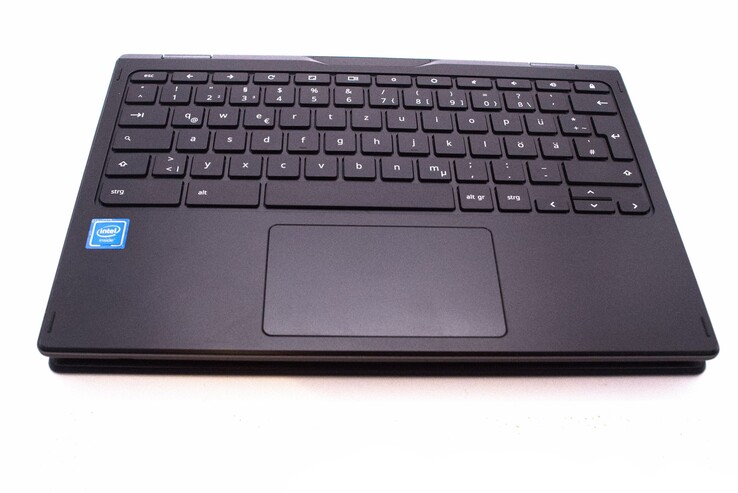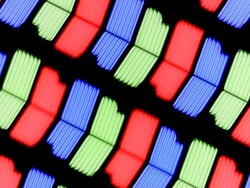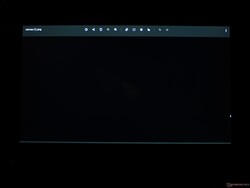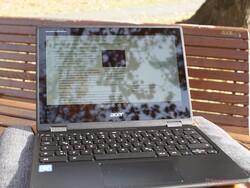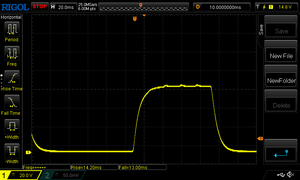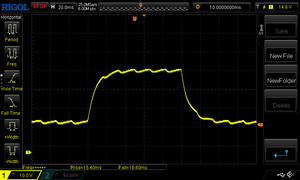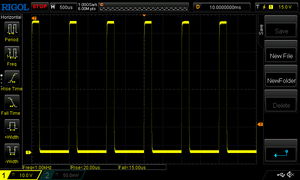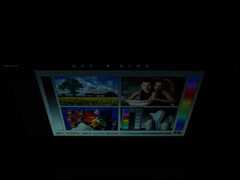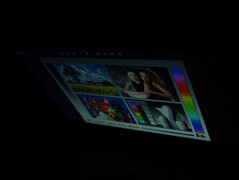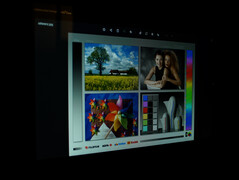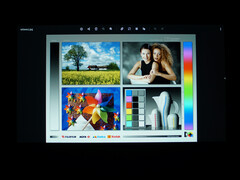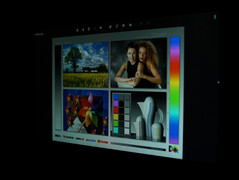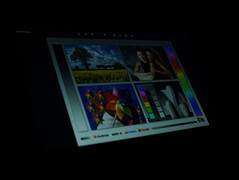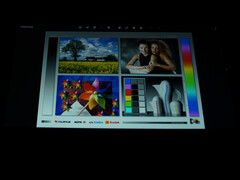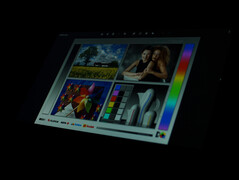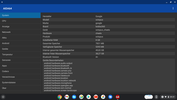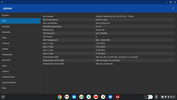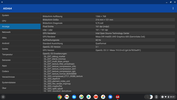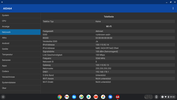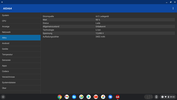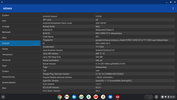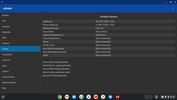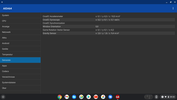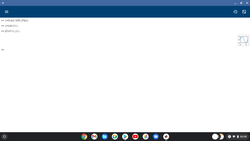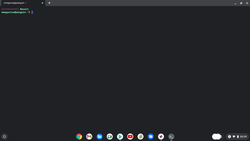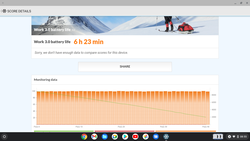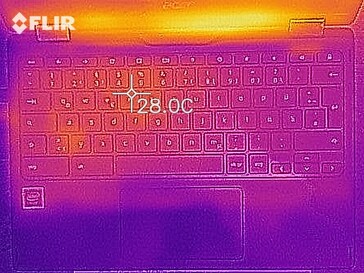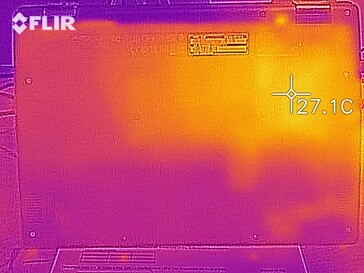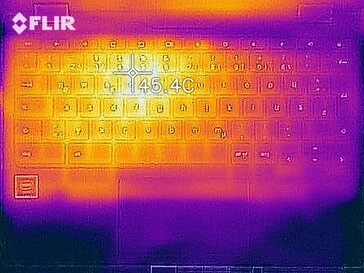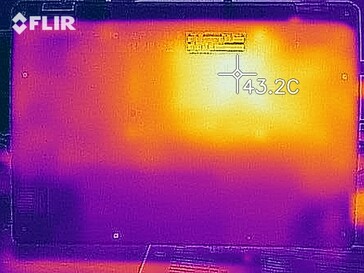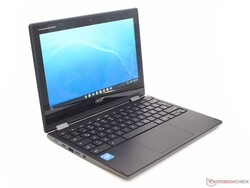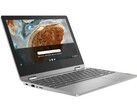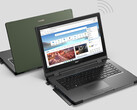Acer Chromebook Spin 511 R752T in review - The 2-in-1 laptop for the classroom

In the summer of 2021, the calls for tenders for digital terminals for Austria's school children ran. The four categories of the competition are Android tablet, Chromebook laptop, iOS tablet and Windows laptop. In the category Chromebook, the Acer Chromebook Spin 511 R752T-C26N tested by us was able to win. The slim convertible convinces with a low weight, silent operation and good system performance. According to the 25% rule, the private contribution for the laptop is only 84.27 Euros (~$95). This makes the Acer Chromebook the most affordable option for learners at Austria's schools. The schools themselves decide which device type from the tender categories they use.
For use in schools, the Chromebooks can be centrally managed using Google Workspace for Education. The Agency for Education and Internationalization provides a guide for device management. Compared to the Windows laptops for schools, of which we already have the Lenovo ThinkBook 14 tested, a laptop with Chrome OS offers some advantages and disadvantages. The hardware adapted to the operating system can work much more efficiently and Google's operating system also has an advantage in terms of security. However, Chromebooks are heavily dependent on the Google Play Store when it comes to software selection, and offline operation is not as unrestricted as under Microsoft's operating system.
Our test database also includes tests for the iPad 10.2 and the Samsung Galaxy Tab S6 Lite can be found. These are tender winners in the iOS and Android tablet categories.
Possible competitors in comparison
Rating | Date | Model | Weight | Height | Size | Resolution | Price |
|---|---|---|---|---|---|---|---|
| 80.3 % v7 (old) | 11 / 2021 | Acer Chromebook Spin 511 R752T-C26N Celeron N4120, UHD Graphics 600 | 1.2 kg | 20 mm | 11.60" | 1366x768 | |
| 83.6 % v7 (old) | 09 / 2021 | Asus Chromebook Flip CX5 CX5500FEA i7-1165G7, Iris Xe G7 96EUs | 2 kg | 18.5 mm | 15.60" | 1920x1080 | |
| 80.7 % v7 (old) | 12 / 2020 | Acer Chromebook 15 CB315-3HT-P297 Pentium N5030, UHD Graphics 605 | 1.9 kg | 20.3 mm | 15.60" | 1920x1080 | |
| 86.2 % v7 (old) | 04 / 2021 | Acer Chromebook Spin 713 CP713-2W-560V i5-10210U, UHD Graphics 620 | 1.4 kg | 16.8 mm | 13.50" | 2256x1504 | |
| 81.5 % v6 (old) | 06 / 2019 | HP Chromebook 14 G5 Celeron N3350, HD Graphics 500 | 1.5 kg | 18.3 mm | 14.00" | 1920x1080 | |
| 83.6 % v7 (old) | Lenovo ThinkBook 14 G2 ITL 20VDS02G00 i3-1115G4, UHD Graphics Xe G4 48EUs | 1.5 kg | 17.9 mm | 14.00" | 1920x1080 | ||
| 83.1 % v7 (old) | 06 / 2020 | Samsung Galaxy Tab S6 Lite Exynos 9611, Mali-G72 MP3 | 467 g | 7 mm | 10.40" | 2000x1200 | |
| 88 % v7 (old) | 10 / 2020 | Apple iPad 10.2 2020 A12 Bionic, A12 Bionic GPU | 495 g | 7.5 mm | 10.20" | 2160x1620 |
Case - Can the plastic withstand the stresses of everyday school life?
The Acer Chromebook Spin 511 is a relatively simple convertible. A very wide display bezel and a lot of plastic determine the exterior. However, the 2-in-1 laptop does not look cheap. Good workmanship and high stability determine the overall impression of the digital end device for Austria's school-age children. In practice, the 1.2 kg (~2.65 lb) laptop should be able to withstand the stresses of everyday school life. The display is protected by the Antimicrobial Corning Gorilla Glass. This resistant glass is supposed to prevent the growth of germs with silver ions. This is certainly a good feature, especially in the hectic school routine.
The pinstripe surface of the case lid, a gray border running around the base, and the painted hinges break up the black plastic dominated surface of the Chromebook. The chrome logo on the lid also provides a small splash of color. All in all, the casing's looks and quality are high.
The Acer Chromebook does not weigh much in the school bag. With a thickness of only 2 cm (~0.8 in) and a weight of 1180 g (~2.6 lb), the convertible is in the same range as most school books. The power supply adds another 330 grams (~11.6 oz) to the school bag.
Equipment - Full port selection only with USB-C adapters
Two USB 3.2 Type-A and two Type-C ports as well as a card reader are offered by Acer's Chromebook Spin. The 2-in-1 laptop does not need more, since screens can also be connected via the right USB-C port with a corresponding adapter. Both USB-C ports can be used for charging. All ports are easily accessible on both sides of the device without getting in each other's way.
SDCardreader
The microSD card reader in the Acer Spin is quite slow. Unfortunately, the card reader is the only way to expand the Chromebook's storage. In return, microSD cards can be fully inserted into the laptop and are securely locked. It is almost difficult to get an inserted microSD card out of the slot again.
| SD Card Reader | |
| average JPG Copy Test (av. of 3 runs) | |
| Lenovo ThinkBook 14 G2 ITL 20VDS02G00 (AV Pro V60) | |
| Average of class Convertible (28.1 - 209, n=23, last 2 years) | |
| Acer Chromebook Spin 713 CP713-2W-560V (Toshiba Exceria Pro M501 microSDXC 64GB) | |
| Acer Chromebook Spin 511 R752T-C26N (AV Pro SD microSD 128 GB V60) | |
| maximum AS SSD Seq Read Test (1GB) | |
| Average of class Convertible (28.9 - 253, n=22, last 2 years) | |
| Lenovo ThinkBook 14 G2 ITL 20VDS02G00 (AV Pro V60) | |
Communication
An Intel Wireless AC 9560 module connects the Acer Chromebook to other devices and the Internet via Wi-Fi 5 and Bluetooth 5.1. Thus, the 2-in-1 laptop is not state-of-the-art, but the network speed should be sufficient even for 4K streaming. The tested Windows laptop for Austrian schools also relies on this module, and was able to achieve transfer speeds of up to 688 Mbps.
Webcam
The image quality of the 0.9 MP webcam installed in the center of the display bezel is only acceptable in balanced lighting. Outside of a very limited area, the webcam's image is either very noisy or heavily overexposed, although other cameras image the object well in the same lighting conditions.
High color deviations and low sharpness also tarnish the camera's image. The test image shows washed-out edges in all areas. This makes it almost impossible to photograph homework.
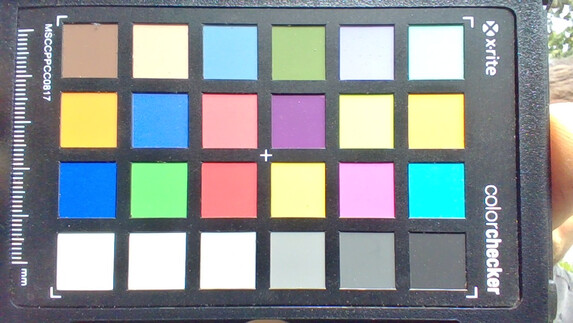
Accessories
In the present configuration, the test device does not come with any accessories other than the power supply and paper documentation. Austria's school users have to do without the digital pen that is included in other configurations of the Chromebook Spin 511. Since the digital device will probably have to run on battery power most of the time in schools, the purchase of a powerbank with USB-C and PowerDelivery could be worthwhile because even very small amounts of energy are sufficient for the economical 2-in-1 laptop to run.
Maintenance
Warranty
In accordance with the award guidelines for digital terminal equipment, the two-year manufacturer's warranty is extended by an additional two years, bringing the warranty period to four years. The information page of the OeAD also recommends taking out electronics insurance against loss and theft and regularly backing up data.
Input devices - The keyboard is loud, fortunately the Chromebook has a touchscreen
Keyboard
The 15 × 15 mm keys with a key drop of a good 2 mm have a quite strong haptic feedback. Thus, the Acer Chromebook seems well suited for learning to type. Only the keyboard noise might tempt you to use the large on-screen keyboard in the long run. However, the on-screen keyboard is also more suitable for beginners in unfavorable lighting conditions, since the physical keyboard does not have a backlight. The keyboard layout is almost the same as a standard keyboard, only the caps lock key has been replaced with a quick search key.
Touchpad
The built-in touchpad scores with a pleasantly smooth surface and high precision. All gestures that Chorme OS offers are recognized by the ClickPad without any problems.
Touchscreen
The 10-finger multi-touchscreen of the student laptop works satisfactorily without major latencies or perceptible deviations. The smooth, anti-microbial Corning Gorilla Glass accepts comparatively few fingerprints and is easy to clean.
Display - The Acer Chromebook clearly loses points here
Neither the 11.6-inch screen nor the resolution of 1366 × 768 pixels of the Acer Chromebook Spin 511 can convince. However, the 2-in-1 laptop offers a very high contrast ratio of 2645:1. Texts are thus well readable and the screen can also convince when playing movies. The average display brightness of only 271 cd/m² might seem a bit low at first glance, but it is not particularly annoying due to the high contrast.
Neither halos nor other annoying illumination defects are perceptible on the screen. Thus, the screen is good in summary, even though we unfortunately had to notice that the screen brightness is regulated via PWM. The flickering is at 1000 Hz and should thus only cause problems for the fewest people.
| |||||||||||||||||||||||||
Brightness Distribution: 85 %
Center on Battery: 291 cd/m²
Contrast: 2645:1 (Black: 0.11 cd/m²)
ΔE ColorChecker Calman: 8.14 | ∀{0.5-29.43 Ø4.78}
ΔE Greyscale Calman: 5.84 | ∀{0.09-98 Ø5}
Gamma: 2.5
CCT: 6761 K
| Acer Chromebook Spin 511 R752T-C26N IPS-Grade, 1366x768, 11.6" | Asus Chromebook Flip CX5 CX5500FEA IPS, 1920x1080, 15.6" | Lenovo ThinkBook 14 G2 ITL 20VDS02G00 AU Optronics B140HAN04.E, a-Si IPS LED, 1920x1080, 14" | Samsung Galaxy Tab S6 Lite TFT, 2000x1200, 10.4" | Apple iPad 10.2 2020 IPS, 2160x1620, 10.2" | |
|---|---|---|---|---|---|
| Display | |||||
| Display P3 Coverage (%) | 37.2 | ||||
| sRGB Coverage (%) | 55.5 | ||||
| AdobeRGB 1998 Coverage (%) | 38.4 | ||||
| Response Times | -3% | -23% | -19% | 4% | |
| Response Time Grey 50% / Grey 80% * (ms) | 33 ? | 35 ? -6% | 45.9 ? -39% | 45.2 ? -37% | 39.2 ? -19% |
| Response Time Black / White * (ms) | 27 ? | 27 ? -0% | 29 ? -7% | 27.2 ? -1% | 20 ? 26% |
| PWM Frequency (Hz) | 1000 ? | 81970 ? | |||
| Screen | 5% | -15% | 3% | -12% | |
| Brightness middle (cd/m²) | 291 | 282 -3% | 386 33% | 503 73% | 477 64% |
| Brightness (cd/m²) | 271 | 259 -4% | 348 28% | 477 76% | 452 67% |
| Brightness Distribution (%) | 85 | 84 -1% | 83 -2% | 91 7% | 86 1% |
| Black Level * (cd/m²) | 0.11 | 0.15 -36% | 0.29 -164% | 0.29 -164% | 0.5 -355% |
| Contrast (:1) | 2645 | 1880 -29% | 1331 -50% | 1734 -34% | 954 -64% |
| Colorchecker dE 2000 * | 8.14 | 5.55 32% | 6.3 23% | 4.4 46% | 2.2 73% |
| Colorchecker dE 2000 max. * | 19.9 | 7.46 63% | 18.3 8% | 10.4 48% | 5 75% |
| Greyscale dE 2000 * | 5.84 | 4.97 15% | 5.4 8% | 7.5 -28% | 3.3 43% |
| Gamma | 2.5 88% | 2.41 91% | 2.55 86% | 2.19 100% | 2.23 99% |
| CCT | 6761 96% | 6473 100% | 5894 110% | 7700 84% | 7019 93% |
| Colorchecker dE 2000 calibrated * | 4.1 | ||||
| Total Average (Program / Settings) | 1% /
3% | -19% /
-16% | -8% /
-1% | -4% /
-9% |
* ... smaller is better
The average color deviation of ΔΕ 5.84 is in a range where single colors are not displayed that correctly. However, the color representation does not have to be perfect for a laptop that is primarily used with applications like word processing programs and similar office applications. Only in art classes could the screen's color representation be found annoying.
Display Response Times
| ↔ Response Time Black to White | ||
|---|---|---|
| 27 ms ... rise ↗ and fall ↘ combined | ↗ 14 ms rise | |
| ↘ 13 ms fall | ||
| The screen shows relatively slow response rates in our tests and may be too slow for gamers. In comparison, all tested devices range from 0.1 (minimum) to 240 (maximum) ms. » 67 % of all devices are better. This means that the measured response time is worse than the average of all tested devices (20.2 ms). | ||
| ↔ Response Time 50% Grey to 80% Grey | ||
| 33 ms ... rise ↗ and fall ↘ combined | ↗ 15 ms rise | |
| ↘ 18 ms fall | ||
| The screen shows slow response rates in our tests and will be unsatisfactory for gamers. In comparison, all tested devices range from 0.165 (minimum) to 636 (maximum) ms. » 44 % of all devices are better. This means that the measured response time is similar to the average of all tested devices (31.6 ms). | ||
Screen Flickering / PWM (Pulse-Width Modulation)
| Screen flickering / PWM detected | 1000 Hz | ≤ 90 % brightness setting | |
The display backlight flickers at 1000 Hz (worst case, e.g., utilizing PWM) Flickering detected at a brightness setting of 90 % and below. There should be no flickering or PWM above this brightness setting. The frequency of 1000 Hz is quite high, so most users sensitive to PWM should not notice any flickering. In comparison: 53 % of all tested devices do not use PWM to dim the display. If PWM was detected, an average of 8108 (minimum: 5 - maximum: 343500) Hz was measured. | |||
The viewing angle analysis reveals that the perceived screen brightness is strongly dependent on the viewing angle, while the color representation remains constant. However, this could also have a positive influence in the classroom. Bench neighbors are thus not distracted by extraneous screen content.
Performance - Sufficient for everyday life at school
Chrome OS is very frugal as an operating system and only requires little system performance. Usually, 4 GB of working memory and a moderately fast dual-core processor are enough for smooth work. Acer's Chromebook Spin 511 uses a SoC with four cores and 8 GB of working memory. Thus, the system performance is sufficient for office applications and other apps. Even most 3D apps from the Google Play Store should run on the convertible. Since the 2-in-1 laptop only costs 337.02 Euros (~$378), the hardware selection is reasonable.
Processor
The Intel Celeron N4120 is a very affordable processor from 2019 with an integrated Intel UHD Graphics 600. Despite passive cooling, the inexpensive processor was able to run steadily at around 2.5 GHz in the test.
The processor thus achieved moderate scores in our benchmarks. The Chromebook's computing power is sufficient for office and Internet applications. Probably not much more is demanded from the digital device in school. Chromebooks are generally very fast when it comes to boot and shutdown times. It only takes 4 seconds from pressing the power button to the login screen of the Acer Chromebook Spin.
The integrated Intel UHD Graphics 600 does not prove to be particularly powerful in the test. Comparing the results of the 3D benchmarks with mid-range smartphones, the graphics performance is significantly lower. But again, the clamshell computer is not purchased as a device for gaming.
PCMark for Android: Work 3.0 | Storage 2.0
3DMark: 2560x1440 Sling Shot OpenGL ES 3.0 Physics | 2560x1440 Sling Shot OpenGL ES 3.0 Graphics | 2560x1440 Sling Shot OpenGL ES 3.0
GFXBench: on screen Aztec Ruins Normal Tier Onscreen | 1920x1080 Aztec Ruins Normal Tier Offscreen | on screen Car Chase Onscreen | 1920x1080 Car Chase Offscreen
WebXPRT 3: Overall
Octane V2: Total Score
Mozilla Kraken 1.1: Total
| Geekbench 5.5 / Multi-Core | |
| Average of class Convertible (2188 - 22023, n=55, last 2 years) | |
| Acer Chromebook Spin 713 CP713-2W-560V | |
| Apple iPad 10.2 2020 | |
| Lenovo ThinkBook 14 G2 ITL 20VDS02G00 | |
| Acer Chromebook Spin 511 R752T-C26N | |
| Average Intel Celeron N4120 (1505 - 1561, n=3) | |
| Samsung Galaxy Tab S6 Lite | |
| Geekbench 5.5 / Single-Core | |
| Average of class Convertible (806 - 2275, n=55, last 2 years) | |
| Lenovo ThinkBook 14 G2 ITL 20VDS02G00 | |
| Apple iPad 10.2 2020 | |
| Acer Chromebook Spin 713 CP713-2W-560V | |
| Acer Chromebook Spin 511 R752T-C26N | |
| Average Intel Celeron N4120 (438 - 449, n=3) | |
| Samsung Galaxy Tab S6 Lite | |
| PCMark for Android / Work 3.0 | |
| Average of class Convertible (10843 - 12986, n=2, last 2 years) | |
| Acer Chromebook Spin 511 R752T-C26N | |
| Average Intel Celeron N4120 (n=1) | |
| PCMark for Android / Storage 2.0 | |
| Acer Chromebook Spin 511 R752T-C26N | |
| Average Intel Celeron N4120 (n=1) | |
| Average of class Convertible (n=1last 2 years) | |
| 3DMark / Sling Shot OpenGL ES 3.0 Physics | |
| Acer Chromebook Spin 713 CP713-2W-560V | |
| Apple iPad 10.2 2020 | |
| Acer Chromebook Spin 511 R752T-C26N | |
| Average Intel Celeron N4120 (n=1) | |
| Samsung Galaxy Tab S6 Lite | |
| HP Chromebook 14 G5 | |
| 3DMark / Sling Shot OpenGL ES 3.0 Graphics | |
| Apple iPad 10.2 2020 | |
| Acer Chromebook Spin 713 CP713-2W-560V | |
| Acer Chromebook Spin 511 R752T-C26N | |
| Average Intel Celeron N4120 (n=1) | |
| HP Chromebook 14 G5 | |
| Samsung Galaxy Tab S6 Lite | |
| 3DMark / Sling Shot OpenGL ES 3.0 | |
| Apple iPad 10.2 2020 | |
| Acer Chromebook Spin 713 CP713-2W-560V | |
| Acer Chromebook Spin 511 R752T-C26N | |
| Average Intel Celeron N4120 (n=1) | |
| Samsung Galaxy Tab S6 Lite | |
| HP Chromebook 14 G5 | |
| GFXBench / Aztec Ruins Normal Tier Onscreen | |
| Average of class Convertible (77.8 - 165.2, n=4, last 2 years) | |
| Apple iPad 10.2 2020 | |
| HP Chromebook x360 14 G1 | |
| Acer Chromebook Spin 511 R752T-C26N | |
| Average Intel Celeron N4120 (n=1) | |
| HP Chromebook 14 G5 | |
| Samsung Galaxy Tab S6 Lite | |
| GFXBench / Aztec Ruins Normal Tier Offscreen | |
| Average of class Convertible (22 - 705, n=6, last 2 years) | |
| Apple iPad 10.2 2020 | |
| HP Chromebook x360 14 G1 | |
| Acer Chromebook Spin 511 R752T-C26N | |
| Average Intel Celeron N4120 (n=1) | |
| Samsung Galaxy Tab S6 Lite | |
| HP Chromebook 14 G5 | |
| GFXBench / Car Chase Onscreen | |
| Average of class Convertible (66.3 - 166.7, n=3, last 2 years) | |
| Apple iPad 10.2 2020 | |
| HP Chromebook x360 14 G1 | |
| Samsung Galaxy Tab S6 Lite | |
| Acer Chromebook Spin 511 R752T-C26N | |
| Average Intel Celeron N4120 (n=1) | |
| HP Chromebook 14 G5 | |
| GFXBench / Car Chase Offscreen | |
| Average of class Convertible (19 - 709, n=4, last 2 years) | |
| Apple iPad 10.2 2020 | |
| HP Chromebook x360 14 G1 | |
| Samsung Galaxy Tab S6 Lite | |
| Acer Chromebook Spin 511 R752T-C26N | |
| Average Intel Celeron N4120 (n=1) | |
| HP Chromebook 14 G5 | |
| WebXPRT 3 / Overall | |
| Average of class Convertible (171 - 426, n=57, last 2 years) | |
| HP Chromebook x360 14 G1 | |
| Lenovo ThinkBook 14 G2 ITL 20VDS02G00 | |
| Acer Chromebook Spin 713 CP713-2W-560V | |
| Apple iPad 10.2 2020 | |
| Acer Chromebook Spin 511 R752T-C26N | |
| Average Intel Celeron N4120 (85 - 106, n=4) | |
| HP Chromebook 14 G5 | |
| Samsung Galaxy Tab S6 Lite | |
| Octane V2 / Total Score | |
| Average of class Convertible (50984 - 123023, n=14, last 2 years) | |
| Acer Chromebook Spin 713 CP713-2W-560V | |
| Apple iPad 10.2 2020 | |
| HP Chromebook x360 14 G1 | |
| Acer Chromebook Spin 511 R752T-C26N | |
| Average Intel Celeron N4120 (16865 - 18537, n=2) | |
| HP Chromebook 14 G5 | |
| Samsung Galaxy Tab S6 Lite | |
| Mozilla Kraken 1.1 / Total | |
| Samsung Galaxy Tab S6 Lite | |
| HP Chromebook 14 G5 | |
| Average Intel Celeron N4120 (2125 - 2415, n=4) | |
| Acer Chromebook Spin 511 R752T-C26N | |
| Acer Chromebook Spin 713 CP713-2W-560V | |
| HP Chromebook x360 14 G1 | |
| Lenovo ThinkBook 14 G2 ITL 20VDS02G00 | |
| Apple iPad 10.2 2020 | |
| Average of class Convertible (407 - 1089, n=59, last 2 years) | |
* ... smaller is better
Chrome OS - Is Google's operating system suitable for schools?
Google's operating system for laptops has outgrown its teething troubles of poor compatibility and online constraints. It even offers some advantages over Windows for use in the school environment. Basically, the system security of Chrome OS is higher because there are hardly any computer viruses that attack the operating system. Google's operating system works very resource-efficiently, so it also runs on comparatively weak hardware that consumes little energy. The user interface is sufficiently similar to that of Android and Windows to quickly find one's way around. The Chromebooks also have a wide range of apps available via the Google Playstore. Whether the forced integration of the Google account has to be seen as an advantage or disadvantage has become obsolete with Microsoft's current strategy of requiring registered user accounts. Both Microsoft and Google collect and work with user data almost without restrictions. Both companies are based in the U.S., which could in principle result in a problem with the General Data Protection Regulation.
In everyday use, there is hardly anything that Windows can do, but Chrome OS cannot. Many counterparts to Windows applications can also be found in the Playstore. Matlab could be mentioned as an example. A version of the program for solving mathematical problems can also be found in the Playstore, which has the same range of functions as on Windows. For computer science lessons, a Linux environment can be started under Chrome OS, which also runs corresponding programs and provides IDEs for developing your own programs.
For the school's IT officer, managing ChromeOS devices via Google Workspace for Education is about as time-consuming as managing Windows, Android and iOS devices. However, the latter three can all be managed using Microsoft Intune, resulting in a greater variety of devices with just one management software. However, the mobile device management (MDM) of the Chrome devices can intervene more extensively in the system than Microsoft Intune. Should system errors creep in due to careless behavior on the part of the young owners, Chromebooks can be reset faster and easier than Windows laptops. Since most data is not stored locally, a reset and restore is almost automatic on a Chromebook. The effort to reset a Windows computer is much higher.
Another question that arises is hardware compatibility with devices available at school or at home. Microscope cameras, interactive whiteboards, printers, scanners and so on are important tools. In case of emergency, the hardware manufacturer should be consulted beforehand. In principle, most cameras connected via USB run without problems, since Chrome OS also has the corresponding drivers. For network printers, it depends on whether the printer supports protocols like IPP, IPPS or AppSocket. The same applies to scanners. The connection of Chromebooks with interactive whiteboards, i.e. digital boards, on the other hand, is only possible to a limited extent in most cases. Only a few manufacturers deliver the corresponding software for devices without Windows. However, if the interactive whiteboard has a video input, it can be connected via USB-C adapter and at least serve as a screen for the Acer Chromebook Spin.
Emissions - Silent in the Classroom
Noise emissions and temperature
Due to the purely passive cooling, the Chromebook is completely silent. Nevertheless, the computer core maintains its performance and hardly heats up the computer's case. In the long-term test with PCMark for Android, consistently good scores were achieved over hours. The surface temperatures did not reach unpleasant levels.
Thus, there are no surface temperatures that are perceived as unpleasant even in the one-hour stress test with high workloads. The palm rests remain cool and the keys do not get uncomfortably hot either.
(±) The maximum temperature on the upper side is 42.6 °C / 109 F, compared to the average of 35.4 °C / 96 F, ranging from 19.6 to 60 °C for the class Convertible.
(±) The bottom heats up to a maximum of 43.2 °C / 110 F, compared to the average of 36.8 °C / 98 F
(+) In idle usage, the average temperature for the upper side is 22.6 °C / 73 F, compared to the device average of 30.3 °C / 87 F.
(+) The palmrests and touchpad are cooler than skin temperature with a maximum of 26.5 °C / 79.7 F and are therefore cool to the touch.
(±) The average temperature of the palmrest area of similar devices was 27.9 °C / 82.2 F (+1.4 °C / 2.5 F).
Speaker
The small speakers are not quite convincing when playing music or movies. The bass is lacking. Only low volumes result in an even frequency distribution. Speech is rendered well by the speakers. The other party was well understandable in video calls. Considering the laptop's price range, the sound quality corresponds to the purchase price.
Acer Chromebook Spin 511 R752T-C26N audio analysis
(±) | speaker loudness is average but good (77.4 dB)
Bass 100 - 315 Hz
(-) | nearly no bass - on average 31.8% lower than median
(±) | linearity of bass is average (11.5% delta to prev. frequency)
Mids 400 - 2000 Hz
(+) | balanced mids - only 4.4% away from median
(±) | linearity of mids is average (8.8% delta to prev. frequency)
Highs 2 - 16 kHz
(+) | balanced highs - only 3.4% away from median
(±) | linearity of highs is average (7.2% delta to prev. frequency)
Overall 100 - 16.000 Hz
(±) | linearity of overall sound is average (22.2% difference to median)
Compared to same class
» 65% of all tested devices in this class were better, 6% similar, 29% worse
» The best had a delta of 6%, average was 20%, worst was 57%
Compared to all devices tested
» 64% of all tested devices were better, 6% similar, 30% worse
» The best had a delta of 4%, average was 24%, worst was 134%
Apple MacBook 12 (Early 2016) 1.1 GHz audio analysis
(+) | speakers can play relatively loud (83.6 dB)
Bass 100 - 315 Hz
(±) | reduced bass - on average 11.3% lower than median
(±) | linearity of bass is average (14.2% delta to prev. frequency)
Mids 400 - 2000 Hz
(+) | balanced mids - only 2.4% away from median
(+) | mids are linear (5.5% delta to prev. frequency)
Highs 2 - 16 kHz
(+) | balanced highs - only 2% away from median
(+) | highs are linear (4.5% delta to prev. frequency)
Overall 100 - 16.000 Hz
(+) | overall sound is linear (10.2% difference to median)
Compared to same class
» 7% of all tested devices in this class were better, 2% similar, 91% worse
» The best had a delta of 5%, average was 18%, worst was 53%
Compared to all devices tested
» 4% of all tested devices were better, 1% similar, 94% worse
» The best had a delta of 4%, average was 24%, worst was 134%
Power management - 41 Wh are enough for a school day
Energy consumption
The Chromebook for Austria's school-age children is extremely energy-efficient. Compared to the Lenovo Thinkpad, which is to be used as a Windows laptop, the Chromebook does not even need half as much energy as the Windows computer in all scenarios except for the switched-off state. The Chromebook fulfills its purpose just as well as the Windows laptop. In terms of sustainability, the Acer Spin 511 is clearly superior to the Lenovo laptop.
The frugal Intel processor shows good efficiency in energy consumption here. The measurements in the stress test revealed short-term load peaks of a maximum of 19.5 watts. In normal operation, the laptop probably needs less than 7 watts.
| Off / Standby | |
| Idle | |
| Load |
|
Key:
min: | |
| Acer Chromebook Spin 511 R752T-C26N Celeron N4120, UHD Graphics 600, , IPS-Grade, 1366x768, 11.6" | Acer Chromebook Spin 713 CP713-2W-560V i5-10210U, UHD Graphics 620, SK hynix BC501 HFM128GDJTNG-831, IPS, 2256x1504, 13.5" | HP Chromebook 14 G5 Celeron N3350, HD Graphics 500, 32 GB eMMC Flash, IPS, 1920x1080, 14" | HP Chromebook x360 14 G1 i5-8350U, UHD Graphics 620, 64 GB eMMC Flash, IPS, 1920x1200, 14" | Lenovo ThinkBook 14 G2 ITL 20VDS02G00 i3-1115G4, UHD Graphics Xe G4 48EUs, Samsung PM991A MZALQ256HBJD, a-Si IPS LED, 1920x1080, 14" | Samsung Galaxy Tab S6 Lite Exynos 9611, Mali-G72 MP3, 64 GB UFS 2.0 Flash, TFT, 2000x1200, 10.4" | Apple iPad 10.2 2020 A12 Bionic, A12 Bionic GPU, 128 GB NVMe, IPS, 2160x1620, 10.2" | Average Intel UHD Graphics 600 | Average of class Convertible | |
|---|---|---|---|---|---|---|---|---|---|
| Power Consumption | -97% | -61% | -72% | -227% | 17% | -22% | -56% | -230% | |
| Idle Minimum * (Watt) | 1.9 | 2.7 -42% | 3.1 -63% | 1 47% | 6.3 -232% | 1.21 36% | 2.12 -12% | 3.47 ? -83% | 4.43 ? -133% |
| Idle Average * (Watt) | 4.1 | 5.5 -34% | 6.2 -51% | 5.7 -39% | 9.5 -132% | 4.24 -3% | 6.43 -57% | 5.61 ? -37% | 7.38 ? -80% |
| Idle Maximum * (Watt) | 4.2 | 6.7 -60% | 8.7 -107% | 6.1 -45% | 10.4 -148% | 4.34 -3% | 6.69 -59% | 6.6 ? -57% | 9.78 ? -133% |
| Load Average * (Watt) | 7.8 | 25 -221% | 14 -79% | 23 -195% | 32.7 -319% | 6.99 10% | 8.17 -5% | 13.6 ? -74% | 45 ? -477% |
| Load Maximum * (Watt) | 15.7 | 36 -129% | 16.1 -3% | 36 -129% | 63.3 -303% | 8.79 44% | 11.84 25% | 20.2 ? -29% | 67.1 ? -327% |
* ... smaller is better
Power consumption in Stress test
Battery life
In schools, there is not yet a supply of power outlets at every seat. For safety reasons, the use of extension cords is also prohibited. Thus, the battery probably has to supply the laptop with power over long stretches in normal cases, since only in the science and IT rooms can a sufficient supply of power outlets be expected.
In the Wi-Fi web surfing test with full brightness, the computer at least achieves a runtime of seven and a half hours. This test should reflect the requirements in everyday school life relatively well. Thus, at least the brand-new laptop can survive the school day with 7 to 8 lessons.
It is difficult to estimate how the battery life will change over the planned service life of four years. Battery life is usually defined as the number of charging cycles that a battery can achieve without its performance in watt hours falling below 80% of the specified value. Typical values here are 800 to 2200 charge cycles. With around 185 school days per year, one would think that the battery should easily last over four years with 800 charge cycles. However, the battery, in order to last six to seven hours, usually has to be discharged from 100% to below 20%. A charge cycle does not mean charging from (almost) empty to full, but only in certain ranges (0% to 20%; 20% to 90%; 90% to 100%). Thus, it is possible that up to three charging cycles are "consumed" per day. In the worst case, the battery is thus no longer able to last the school day after approx. 1.5 school years. ((800 [charging cycles] /3 [charging cycles/day])/185 [days/school year] = 1.44 [school years]).
However, the test showed that the energy-saving Chromebook can also be powered by a USB power bank. Students could thus carry an "emergency ration" of energy for the school day. A powerbank that supplies 5 V and 2.4 A is already enough to charge the Acer Spin at least very slowly. With a USB powerbank like the INIU Powerbank that costs about 35 Euros (~$35) on Amazon and a corresponding USB Type-C cable, charging is even faster thanks to PowerDelivery.
The digital end devices will thus continue to pose problems for the school boards. It would make sense to install charging stations in the schools. Permanent battery operation cannot be sustainable.
| Acer Chromebook Spin 511 R752T-C26N Celeron N4120, UHD Graphics 600, 41 Wh | Acer Chromebook Spin 713 CP713-2W-560V i5-10210U, UHD Graphics 620, 50.3 Wh | HP Chromebook 14 G5 Celeron N3350, HD Graphics 500, 47.36 Wh | HP Chromebook x360 14 G1 i5-8350U, UHD Graphics 620, 60.9 Wh | Lenovo ThinkBook 14 G2 ITL 20VDS02G00 i3-1115G4, UHD Graphics Xe G4 48EUs, 58 Wh | Samsung Galaxy Tab S6 Lite Exynos 9611, Mali-G72 MP3, Wh | Apple iPad 10.2 2020 A12 Bionic, A12 Bionic GPU, 32.9 Wh | Average of class Convertible | |
|---|---|---|---|---|---|---|---|---|
| Battery runtime | 26% | 34% | 50% | -1% | 135% | 129% | 54% | |
| Reader / Idle (h) | 9.4 | 13.2 40% | 35.3 276% | 37.4 298% | 25.1 ? 167% | |||
| WiFi v1.3 (h) | 8.2 | 10.3 26% | 11 34% | 12.3 50% | 7.6 -7% | 13.2 61% | 13 59% | 11.2 ? 37% |
| Load (h) | 3.1 | 2 -35% | 5.2 68% | 4 29% | 1.793 ? -42% | |||
| H.264 (h) | 8.8 | 15.8 | 15.6 | 15.2 ? |
Pros
Cons
Verdict - Can do a lot, costs little
The Acer Chromebook Spin is probably a good choice for the planned use as a digital end device for students. The 2-in-1 laptop combines the advantages of a Android tablet and a folding calculator in one device. At the same time, the Chromebook is light, has a balanced performance and the battery should also withstand everyday school use. Of all four options so far the Chromebook is the cheapest alternative. The Acer convertible does not look cheap at all, and the Acer Chromebook Spin 511 should more than fulfill the requirements of everyday school life.
It is conceivable that many schools shy away from choosing the Chromebook in order to be able to work with the familiar Windows. However, it quickly became apparent in the test that this device can definitely deliver the same features as a Windows laptop. The advantages of Chrome OS clearly outweigh the disadvantages of not using Windows. The Chromebook is a versatile device. Even the argument that students will mainly work with Windows in their later professional life could prove to be wrong in the next few years. Chromebooks with specifications that are adapted to corporate customers have been available for a few years now.
It doesn't always have to be Windows. In everyday use, the Acer Chromebook can perform all tasks from surfing, office applications, streaming, gaming and learning. You only have to get used to the available software.
In the test of the Lenovo ThinkBook 14 G2 ITL we compared the advantages of Android, iOS, Windows devices and Chromebooks in the conclusion. The question of which device the schools will prefer remains after this test. This is because most of the advantages that, for example, the Samsung Galaxy Tab S6 Lite offers in school use, the Acer Spin 511 can also deliver. However, the Samsung tablet is clearly ahead in terms of battery life, while the Chromebook's system performance is much higher.
Price and availability
The Acer Chromebook Spin 511 R752T-C26N is not available in stores in the tested configuration. The alternative configurations offered via Amazon (DE) are priced around €450 (~$505). According to OeAD, the winning device of the tender for digital end devices of the category Chromebook-laptop is procured for €337.02 (~$378). Of this, parents pay only €84.27 (~$95) under the 25% rule.
Acer Chromebook Spin 511 R752T-C26N
- 11/16/2021 v7 (old)
Marc Herter




